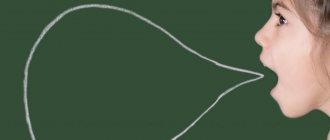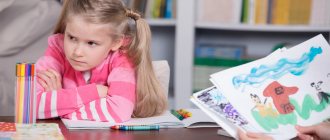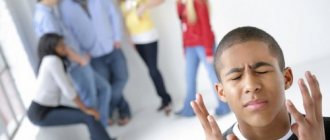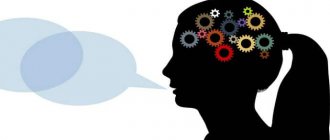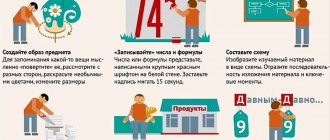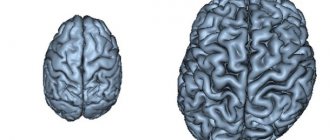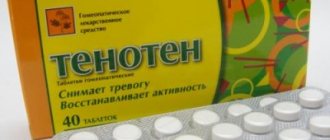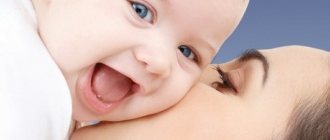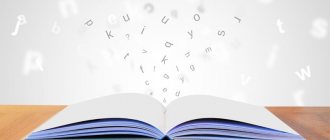The erased form of dysarthria or pseudobulbar is a violation of speech activity due to articulation disorders with lesions of the nervous system. Deviations in this form of dysarthria are difficult to identify without the help of a specialist. A characteristic manifestation is clarity in the pronunciation of isolated sounds, but poor differentiation and automation of pronunciation during speech flow. Obvious symptoms of erased dysarthria in children are:
- slurred speech;
- difficulties with diction;
- distorted pronunciation of sounds;
- automatic replacement of syllables based on pronunciation adjacency.
What is erased dysarthria? ↑
Modern speech therapy cannot give an unambiguous definition of the term “erased dysarthria.” It is believed that this is a pathological disease, which manifests itself in the distortion of phonetic prosodic components of speech activity, due to the presence of microorganic effects on the brain.
This concept appeared in the scientific literature relatively recently, and it was introduced by O. Tokareva, who designated erased dysarthria as a form of the disease that has mild symptoms. The presence of erased dysarthria can be detected only after reaching 5 years of age. The disease requires long-term complex treatment in combination with individual speech therapy. There are no universal methods of correction work yet, but the presence of the disease can be diagnosed at an early stage of development. The complex of therapy methods includes:
- drug treatment;
- psychological and pedagogical correctional work;
- speech therapy classes.
The most common causes of the disease in children are:
- intrauterine development disorders;
- infectious diseases of the brain;
- injuries received during childbirth.
Complications, prognosis
An incorrect assessment of the swallowing condition can lead to an immediate threat to the patient's life due to aspiration or a significant deterioration in his health due to malnutrition, dehydration. It has been repeatedly shown that in neurological patients, as a result of sensory impairment in the upper part of the aerodynamic tract, there is a risk of silent aspiration (without coughing or visible signs).
The prognosis depends on the degree of development of the central nervous system disorder. In case of injury, it is possible to completely eliminate the speech communication disorder. In case of cerebellar dysarthria, which has developed due to a degenerative disease, it is necessary to take into account long-term adverse effects.
Symptoms of manifestation ↑
Modern speech therapy identifies symptoms of the disease in children at three levels: general motor skills, fine motor skills of the hands and articulatory apparatus.
- Children experience increased fatigue, decreased activity and limited active movements. The patient finds it difficult to balance on one leg. They are difficult to imitate movements and are unable to perform basic exercises in physical education classes.
- Difficulties arise in mastering self-service skills. Children are unable to draw, do handicrafts, or work with small objects. There is difficulty in recognizing the spatial arrangement of elements. Imbalance of fine motor skills does not allow performing basic exercises.
- Symptoms of erased dysarthria appear primarily at the level of articulation. There is lethargy in speech activity, the lips and tongue are almost inactive, and paretic muscle tone occurs. Weakness manifests itself in performing articulation exercises. Spasticity manifests itself as anemia and excessive muscle tension. With this form of the disease, children experience language changes. Hypercrises occur, accompanied by trembling of the tongue and voice. They appear when the facial muscles are tense. Apraxia is observed, which limits the change from one movement of the articulatory apparatus to another. When deviation occurs, it is difficult for the patient to perform speech therapy exercises and his lips become distorted. Symptoms of hypersalvation (excessive salivation) indicate weakened muscle tone and difficulty controlling them.
Modern speech therapy considers characteristic signs of the development of the disease in children to be unclear pronunciation, involuntary changes in movements and weakness of articulatory muscles in the process of speech activity and exercises.
Subscribe to newsletter by email
Erased dysarthria occurs very often in speech therapy practice. The main complaints with erased dysarthria: slurred, inexpressive speech, poor diction, distortion and replacement of sounds in words with a complex syllabic structure, etc. Erased dysarthria is a speech pathology that manifests itself in disorders of the phonetic and prosodic components of the speech functional system and arises as a result of unexpressed microorganic damage to the brain (L.V. Lopatina). A survey of children in mass kindergartens showed that in senior and preparatory school groups from 40 to 60% of children have deviations in speech development. Among the most common disorders: dyslalia, rhinophonia, phonetic-phonemic underdevelopment, erased dysarthria. In groups for children with general speech underdevelopment, up to 50% of children, and in groups with phonetic-phonemic underdevelopment, up to 35% of children have erased dysarthria. Children with severe dysarthria need long-term, systematic individual speech therapy assistance. Speech therapists of specialized groups plan speech therapy work as follows: in frontal, subgroup classes with all children they study program material aimed at eliminating general speech underdevelopment, and in individual classes they correct the pronunciation side of speech and prosody, i.e. elimination of symptoms of erased dysarthria. The erased form of dysarthria is most often diagnosed after five years. All children whose symptoms correspond to erased dysarthria are sent for consultation to a neurologist to clarify or confirm the diagnosis and to prescribe adequate treatment, because in case of erased dysarthria, the method of correctional work should be comprehensive and include: - medical intervention; — psychological and pedagogical assistance; - speech therapy work. For early detection of erased dysarthria and proper organization of complex effects, it is necessary to know the symptoms that characterize these disorders. The examination of the child begins with a conversation with the mother and study of the child’s outpatient development chart. Analysis of anamnestic information shows that there are: deviations in intrauterine development (toxicosis, hypertension, nephropathy, etc.); asphyxia of newborns; rapid or prolonged labor. According to the mother, “the child did not cry right away; the child was brought in to be fed later than everyone else.” In the first year of life, many were observed by a neurologist and prescribed medication and massage. The diagnosis for up to a year was “PEP” (perinatal encephalopathy). The development of a child after one year, as a rule, is successful for everyone, the neurologist no longer observes these children, and the child is considered healthy. When examined in a clinic by a speech therapist, children aged 5-6 years with erased dysarthria reveal the following symptoms: GENERAL MOTOR SKILLS. Children with erased dysarthria are motorically awkward, the range of active movements is limited, and the muscles quickly tire during functional loads. They stand unsteadily on one leg, cannot jump on one leg, walk along a “bridge,” etc. They imitate movements poorly: how a soldier walks, how a bird flies, how bread is cut, etc. Motor incompetence is especially noticeable in physical education and music classes, where children lag behind in tempo, rhythm of movements, as well as in switching movements. FINE MOTOR SKILLS OF HAND. Children with erased dysarthria late and have difficulty mastering self-care skills: they cannot button a button, untie a scarf, etc. During drawing classes, they don’t hold a pencil well and their hands are tense. Many people don't like to draw. Motor clumsiness of the hands is especially noticeable during applique classes and with plasticine. In works on appliqué, difficulties in the spatial arrangement of elements can also be traced. Violation of fine differentiated movements of the hands is manifested when performing sample tests of finger gymnastics. Children find it difficult or simply cannot perform an imitation movement without outside help, for example, “lock” - put their hands together, intertwining their fingers; “rings” - alternately connect the index, middle, ring and little fingers with the thumb, and other finger gymnastics exercises. During origami classes they experience great difficulties and cannot perform the simplest movements, because... both spatial orientation and subtle differentiated hand movements are required. According to mothers, many children under 5-6 years old are not interested in playing with construction sets, do not know how to play with small toys, and do not assemble puzzles. School-age children in the first grade experience difficulties in mastering graphic skills (some experience “mirror writing”; substitution of letters “d” - “b”, vowels, word endings; poor handwriting; slow pace of writing, etc.). FEATURES OF THE ARTICULATING APPARATUS. In children with erased dysarthria, pathological features in the articulatory apparatus are revealed. Pareticity of the muscles of the organs of articulation is manifested in the following: the face is hypomimic, the facial muscles are flaccid upon palpation; Many children do not maintain the closed mouth pose, because the lower jaw is not fixed in an elevated state due to laxity of the masticatory muscles; lips are flaccid, their corners are drooping; During speech, the lips remain flaccid and the necessary labialization of sounds is not produced, which worsens the prosodic aspect of speech. The tongue with paretic symptoms is thin, located at the bottom of the mouth, flaccid, the tip of the tongue is inactive. With functional loads (articulation exercises), muscle weakness increases. Spasticity of the muscles of the organs of articulation is manifested in the following: the face is amicable, the facial muscles are hard and tense on palpation. The lips of such a child are constantly in a half-smile: the upper lip is pressed against the gums. During speech, the lips do not take part in the articulation of sounds. Many children who have similar symptoms do not know how to perform the “tube” articulation exercise, i.e. pull the lips forward, etc. With a spastic symptom, the tongue is often changed in shape: thick, without a pronounced tip, inactive. Hyperkinesis with erased dysarthria manifests itself in the form of trembling, tremor of the tongue and vocal cords. Tremor of the tongue appears during functional tests and loads. For example, when asked to support a wide tongue on the lower lip with a count of 5-10, the tongue cannot maintain a state of rest, trembling and slight cyanosis appear (i.e., blue tip of the tongue), and in some cases the tongue is extremely restless (waves roll through the tongue in longitudinal or transverse direction). In this case, the child cannot keep his tongue out of the mouth. Hyperkinesis of the tongue is often combined with increased muscle tone of the articulatory apparatus. Apraxia with erased dysarthria is simultaneously detected in the inability to perform any voluntary movements with the hands and organs of articulation. In the articulatory apparatus, apraxia manifests itself in the inability to perform certain movements or when switching from one movement to another. Kinetic apraxia can be observed when the child cannot smoothly transition from one movement to another. Other children experience kinesthetic apraxia, when the child makes chaotic movements, “groping” for the desired articulatory position. Deviation, i.e. deviation of the tongue from the midline, also manifests itself during articulation tests and during functional loads. Deviation of the tongue is combined with asymmetry of the lips when smiling with a smoothness of the nasolabial fold. Hypersalivation (increased salivation) is detected only during speech. Children cannot cope with salivation, do not swallow saliva, and the pronunciation side of speech and prosody suffer. When examining the motor function of the articulatory apparatus in children with erased dysarthria, the ability to perform all articulation tests is noted, i.e. Children, according to instructions, perform all articulatory movements - for example, puff out their cheeks, click their tongue, smile, stretch out their lips, etc. When analyzing the quality of performing these movements, one can note: blurriness, unclear articulation, weakness of muscle tension, arrhythmia, decreased range of movements, short duration of holding a certain pose, decreased range of movements, rapid muscle fatigue, etc. Thus, under functional loads, the quality of articulatory movements sharply falls. During speech, this leads to distortion of sounds, their mixing and deterioration in the overall prosodic aspect of speech. SOUND PRONUNCIATION. When first meeting a child, his sound pronunciation is assessed as complex dyslalia or simple dyslalia. When examining sound pronunciation, the following are revealed: confusion, distortion of sounds, replacement and absence of sounds, i.e. the same options as for dyslalia. But, unlike dyslalia, speech with erased dysarthria also has disturbances on the prosodic side. Impaired pronunciation and prosody affect speech intelligibility, intelligibility, and expressiveness. Some children go to the clinic after classes with a speech therapist. Parents ask why the sounds that the speech therapist provided are not used in the child’s speech. The examination reveals that many children who distort, omit, mix or replace sounds can pronounce these same sounds correctly in isolation. Thus, sounds in erased dysarthria are produced in the same ways as in dyslalia, but for a long time they are not automated and are not introduced into speech. The most common violation is a defect in the pronunciation of whistling and hissing sounds. Children with erased dysarthria distort and mix not only articulatory complex sounds that are close in place and method of formation, but also acoustically opposed ones. Quite often, interdental pronunciation and lateral overtones are noted. Children have difficulty pronouncing words with a complex syllabic structure; they simplify the sound content by omitting some sounds when consonants are combined. PROSODICA. The intonation-expressive coloring of the speech of children with erased dysarthria is sharply reduced. The voice, vocal modulations in pitch and strength suffer, speech exhalation is weakened. The timbre of speech is disrupted and sometimes a nasal tone appears. The pace of speech is often accelerated. When reciting a poem, the child’s speech is monotonous, gradually becomes less intelligible, and the voice fades away. The children's voice during speech is quiet, modulation in pitch and voice strength is not possible (the child cannot change the pitch of the voice by imitation, imitating the voices of animals: cows, dogs, etc.). In some children, speech exhalation is shortened, and they speak while inhaling. In this case, speech becomes choked. Quite often, children are identified (with good self-control) in whom, during a speech examination, deviations in sound pronunciation do not appear, because They pronounce the words in a chant, i.e. by syllables, and only violation of prosody comes first. GENERAL SPEECH DEVELOPMENT. Children with erased dysarthria can be divided into three groups. First group. Children who have impaired sound pronunciation and prosody. This group is very similar to children with dyslalia. Often, speech therapists treat them as dyslastic, and only in the process of speech therapy work, when there is no positive dynamics in the automation of sounds, does a suspicion arise that this is erased dysarthria. Most often, this is confirmed during an in-depth examination and after consultation with a neurologist. These children have a good level of speech development, but many of them have difficulty learning, distinguishing and reproducing prepositions. Children confuse complex prepositions and have problems distinguishing and using prefixed verbs. At the same time, they speak coherent speech and have a rich vocabulary, but may have difficulty pronouncing words with a complex syllabic structure (for example, frying pan, tablecloth, button, snowman, etc.). In addition, many children experience difficulties with spatial orientation (body diagram, concepts of “below-above,” etc.). Second group. These are children in whom a violation of sound pronunciation and the prosodic side of speech is combined with the incomplete process of forming phonemic hearing. In this case, children encounter isolated lexical and grammatical errors in their speech. Children make mistakes in special tasks when listening and repeating syllables and words with oppositional sounds - for example, when asked to show the desired picture (mouse-bear, fishing rod-duck, scythe-goat, etc.). Thus, in children, the auditory and pronunciation differentiation of sounds is unformed. Children's vocabulary lags behind the age norm. Many people experience difficulties in word formation, make mistakes in agreeing a noun with a numeral, etc. Sound pronunciation defects are persistent and are regarded as complex, polymorphic disorders. This group of children with phonetic-phonemic underdevelopment (FFN) and erased dysarthria should be referred by the speech therapist of the clinic to the MPC (medical-pedagogical commission), to a specialized kindergarten (to the FFN group). Third group. These are children who have a persistent polymorphic disorder of sound pronunciation and a lack of prosodic aspect of speech combined with underdevelopment of phonemic hearing. As a result, the examination reveals a poor vocabulary, pronounced errors in grammatical structure, the impossibility of a coherent statement, and significant difficulties in mastering words of different syllabic structures. All children in this group demonstrate undeveloped auditory and pronunciation differentiation. Ignoring prepositions in speech is indicative. These children with erased dysarthria and general speech underdevelopment (GSD) should be sent to MPC (in specialized kindergarten groups) to GSD groups. Thus, children with erased dysarthria are a heterogeneous group. Depending on the level of development of linguistic means, children are sent to specialized groups: - with phonetic disorders; - with phonetic-phonemic underdevelopment; - with general speech underdevelopment. (according to E. F. Arkhipova)
Pronunciation of sounds ↑
The symptoms of the disease are similar, as is dyslalia (difficulty with sound pronunciation). During the initial examination of children, distortion, replacement and mixing of sounds are observed, but prosodic disturbances occur only in the erased form.
The main difference between the disease is the correct pronunciation of isolated sounds. An obvious sign of the disease is difficulty pronouncing whistling and hissing sounds. The articulatory apparatus is not able to distinguish between sounds according to an adjacent method of formation, therefore overtones of acoustically opposed sounds are observed. The sound content of speech is simplified and assimilation of sound structures occurs.
Preventive measures
Primary prevention is aimed at the broadest possible population. It is understood as “the prevention of situations that threaten certain impairments in communication abilities.” Primary prevention is divided into:
- nonspecific , supporting desirable forms of behavior in general;
- specific , aimed at preventing a specific risk.
Secondary prevention is aimed at vulnerable risk groups, such as children with a hereditary burden, premature babies, low birth weight children, and children with developmental speech disorders.
Tertiary prevention is most closely related to therapy and is intended to prevent further development of negative manifestations in people suffering from or having suffered from speech impairments.
General development of the speech apparatus ↑
Conventionally, children with erased dysarthria can be divided into 3 groups:
- Patients with difficulties in differentiating sounds and prosody. The level of development of the speech apparatus in such children is at a high level, and the disease manifests itself in difficulties in using prepositions. A disorder in the pronunciation of complex syllable structures is accompanied by a lack of spatial orientation.
- There is a violation of the development of phonemic hearing against the background of prosody and difficulties with the pronunciation of sounds. The speech contains lexical and grammatical errors. There is no sound differentiation skill.
- Polymorphic deviations in the differentiation of sounds and underdeveloped phonemic perception are characteristic of the third group. Vocabulary and lack of knowledge of grammar are combined with difficulties in constructing syllable structures.
Patients are unable to clearly express their thoughts. Against the background of difficulties with articulation, a perception disorder develops, which subsequently leads to the development of mental disorders.
What is cerebellar dysarthria, differences from other types of disorder
Cerebellar dysarthria manifests itself in disorders of the cerebellum and is part of the cerebellar syndrome. The clinical picture of cerebellar dysarthria is characterized by ataxia, hypotonia, decreased pharyngeal reflex, and irregular “explosive” speech (dysprosody). Occurs in multiple sclerosis and brain tumors.
The main difference between cerebellar dysarthria and other types of disorder is the presence of ataxia. This is a neurological symptom characterized by poor coordination of movements. This is a nonspecific clinical manifestation indicating dysfunction of the part of the nervous system responsible for coordinating movements.
Spinocerebellar ataxia is a group of slowly progressive disorders, often with obvious cerebellar atrophy.
Treatment
Correction is carried out in several directions at once. Working with sounds involves not only their production, but also learning to put them into syllables and words, expanding vocabulary and establishing grammatical sequence. To do this, a set of techniques is used:
- physiotherapeutic procedures;
- articulation gymnastics;
- massage;
- rhythm;
- drug therapy;
- physiotherapy.
The earlier the problem is detected and treatment begins, the better the prognosis and the higher the chances of successful speech development. Classes should be regular and systematic. Otherwise, it will not be possible to develop automaticity in pronunciation, and there will be no positive result. The correction is carried out in accordance with several principles:
- speech development is aimed at establishing communication with the outside world, adapting a person in a work, school or social environment;
- consolidation of articulatory postures by kinesthetic-visual methods;
- motivation to establish normal pronunciation, develop self-confidence and self-control during a conversation;
- therapy always begins with more intact sounds and partly understandable words, gradually moving on to complex ones;
- learning to differentiate sounds by ear;
- early start of work with children who had central nervous system pathologies in the pre- or postnatal period.
An integrated approach and starting work in the early stages of detecting pathology helps to restore articulate speech to most patients. Classes with patients are not limited to the speech therapy room and continue at home. This helps to quickly form sound automation and restore normal pronunciation.
Psychological support for dysarthria
The post-stroke state is a severe stress for people who have suffered a brain attack, and stress is known to significantly aggravate the problems. During this period, the patient, more than ever, needs the peace and care of others, but at the same time they should not demonstrate his inferiority, physical and mental ill health. If speech disorders occur, family and friends should try to listen carefully to the patient, not interrupt him or finish his sentences for him.
The rehabilitation clinic of the Yusupov Hospital employs highly qualified, experienced psychologists who provide psychological support to both the patient himself and the relatives caring for him. The advice and recommendations of our psychologists help to significantly improve the emotional state of patients and set them up for positive results.
Restoring the speech function of patients after strokes at the Yusupov Hospital is carried out not only by the main observing specialists - neurologists, but also by speech therapists, physiotherapists, and psychologists. The rehabilitation program is compiled individually for each patient, taking into account his general condition, concomitant diseases and the severity of speech disorders.
Rehabilitation activities are carried out using the latest medical techniques that have proven their effectiveness in world practice.
Thanks to the high professionalism of our specialists, the modern equipment of the rehabilitation clinic at the Yusupov Hospital, as well as close interaction with loved ones, the recovery of patients who have suffered a stroke complicated by speech impairment occurs in a short time.
Author
Ekaterina Dmitrievna Abramova
Neurologist, director of the chronic pain clinic
Conducting classes ↑
Before starting complex classes on dysarthria, careful preparation is required, which consists of four stages of work.
Long-term plan and work to develop speech muscles and carry out the necessary correction:
- Working on proper breathing to develop speech. The sequence of inhalation and exhalation when speaking, holding the breath on individual syllables and sounds.
- Development of articulatory motor skills.
- Auditory memory training, work to increase attention and perception.
- Exercises for fine and gross motor skills.
All forms of dysarthria (including the erased form) have various impairments of articulatory motor skills. Depending on the type of muscle defect, the most promising gymnastics is selected.
The work is based on two methods - passive and active articulatory gymnastics.
Causes of the disease
The appearance of this pathology is always associated with damage to some neurons in the brain. As a result, incoordination of articulation occurs, the rhythm of speech and the patient’s voice change. The severity of the disease corresponds to the severity of organic changes in the nervous system.
The cause of cerebellar dysarthria in children usually lies in pathologies of intrauterine development or trauma at the time of birth. Manifestations of the disease are often associated with cerebral palsy. In some cases, it accompanies the course of oligophrenia. As a complication, the condition occurs after hemolytic disease of the newborn.
In adults, the etiology of dysarthria is often associated with external influences on the cerebellum. It occurs against the background of neuroinfections and brain tumors. In some cases, there is speech impairment after skull injuries and strokes. Dysarthria can be caused by hereditary pathologies of neuromuscular synapses and neurons, as well as aplasia of the cranial nerve nuclei, called Mobius syndrome after the scientist who first described this condition.
